Brevis...
Price: $3,950
Likes: audiophile 7.1 sound
Dislikes: no DSD decoding
Wow Factor: "the summit for HT receivers"
by John Gatski
This is my third AudioControl home theater A/V product review. And as with the Maestro 3 pre/pro and AVR-4 receiver I tested a few years ago, the new AVR-6 receiver maintains the audiophile-caliber, multi-channel signal path design that I have come to expect from this longtime audio test and component manufacturer. In fact, their AVRs may be the best-sounding receivers out there. Where other companies hype receivers with Internet and a jillion other apps, AudioControl quietly pushes its emphasis on audio quality.
Features
This is my third AudioControl home theater A/V product review. And as with the Maestro 3 pre/pro and AVR-4 receiver I tested a few years ago, the new AVR-6 receiver maintains the audiophile-caliber, multi-channel signal path design that I have come to expect from this longtime audio test and component manufacturer. In fact, their AVRs may be the best-sounding receivers out there. Where other companies hype receivers with Internet and a jillion other apps, AudioControl quietly pushes its emphasis on audio quality.
Features
Priced at $3,950 through specialty AV installers, the AVR-6 is 100-wpc with all channels driven into 8 ohm loads. The Class-H output receiver has just the right amount of features — including new UltraHD 4k scaling/pass-through, enhanced zone control/routing and Internet radio input. The AC AVR line also includes a second receiver, the $6,000 AVR-8, the successor to the AVR-4, which was formerly top of the AC line. The AVR-8 sports 20 additional watts per each channel, a beefier power supply and output configuration to handle 4 ohms loads (up to 200 wpc). The AC A/V products have much of their assembly done in the USA, though many components are, of course, made offshore
The AVR-6 contains seven HDMI inputs, two HDMI output paths, six analog stereo inputs, three component and four composite video inputs. There are also two zone output sections with composite video and stereo analog output. The AVR-6 includes optical and digital audio inputs, but has no digital audio output. Other ports include USB 2.0, Ethernet, trigger input and RS-232 for enhanced control of the receiver. It even has an 1/8th-inch headphone jack, though it is inconveniently located on the back. (AC defends the HP jack location, stating that a front-panel jack clutters up the unit clean appearance.)
The inputs can be assigned to a specific video and audio input and they can be labeled via the software. The inputs already have preset names, but those can be changed via the set up. I usually name them for that particular component, i.e. Pioneer, Sony etc.
 |
| Plenty of I/O for the AVR-6 |
The AudioControl AVR receivers also have 7.1 channel multichannel analog preamp outputs for those who want more power from a separate amp, or you could feed another room with the multichannel output while listening to the built-in channels in the main room. The AVR-6 has a single subwoofer output, instead of two that I normally see in receivers. Alas, the AudioControl receivers no longer have multichannel analog inputs. According to AC's Chris Kane, there are fewer multichannel output Blu-ray players that necessitate multichannel inputs on the preamp and receivers. And, he noted, the converters are so good in the AVR-6 that you are not likely to hear an improvement by using on-board BD player converters. Still, I miss the analog multichannel-in feature; I often use my reference Pioneer BDP-09FD Elite's analog output.
As with the acclaimed AVR-4 that was on the market for about a year in 2012-2013, the AVR-6 and AVR-8 receivers are for quality-obsessed fanatics who want the same kind of audio that audiophiles here from esoteric two-channel systems. The heart of the system its 32-bit DSP engine with Cirrus D/A converters and Class H power supply, bi-polar output amp section.
The AVR-6‘s specs are impressive; AC says it can deliver 100-wpc into 8 ohms into all seven channels. In fact, you can tell by the power consumption rating at full power (1,500 watts), this baby can crank out the watts. The noise spec also is impressive — 100 dB in the input and output stages. The AVR-8 has a bit more oomph in its output; it is similar to the AVR-4, which I had on hand during the review. Sonic-wise, the AVR-4 and AVR-6 were about equal at normal listening levels in my A/V room.
The AVR-6 on-screen set up menus and features are vast, but fairly intuitive. The menus are broken down into several sub menus including Input Configuration, General Setup, Auto Setup, Speaker Type, Speaker Distance, Video Inputs/Outputs, Audio Output Mode Zone Settings and Network. I like the fact that AVR-6 also can be operated via buttons on the front panel — as well as the included remote. If you lose the remote (or run out of batteries), you can still operate this receiver.
The on-screen display is easy enough to understand to activate the various setup and functions. The black lettering on white screen is not easy to see in a brightly-lit room, so I dimmed the lights a bit to make the words more legible. The system setup for level matching, delay and EQ can be manually set up, my preferred method, or by use of an onboard auto setup mode.
There are numerous parameters for adjusting audio and video, including bypassing the scaler for source-direct video connection. The scaler quality is excellent, and I did not visibly see any degradation when switching between bypass and the scaler with 1080P-source Blu-ray players. I did not have a 4K LCD on hand to check out the highest-res conversion. But I am confident it is exemplary, based on the 1090P performance.
Besides the excellent decoding of lossless hi-res music formats (Dolby TruHD, DTS Master HD, linear PCM) and multi-channel digital, you also can engage additional processing for two-channel audio including Dolby Pro-Logic II and DTS Neo. The USB networking feature allows various options, including hi-res stereo playback from a sources such as Windows Media Player, and HD video distribution. The AVR-6 is also equipped with an Internet radio input.
The large analog volume control is substantial in its appearance, just like the previous AVR-4, but its mechanical action is no longer continuous rotation. You click the knob to the right to raise the volume — one dB at a time. The display indicates the gain from 0 to 99 in 1 dB steps.
Speaking of volume level, the AVR-6’s onscreen display, as well as other system info, is turned off when the video bypass is enabled. Additional volume options are available in the setup, including switchable Dolby Volume and Dolby Leveler to provide consistent level when the gain is changed.
The AVR-6 is am impressive-looking receiver — with its large black chassis, blue LED display lighting and that big volume knob. The specs say it weighs only 35 pounds, but it feels heavier than that. My AVR-4 weighs a whopping 60 pounds with its huge power transformer; I guess the AVR-6's weight savings comes from a smaller, more-efficient power supply.
The set up
I installed the AVR-6 in my primary home cinema room. The system is based around a 2011 Sony LX-929 full-array backlight LED TV. This HT system consists of Westlake loudspeakers comprised of two LC8.1 (L+R), LC2.65 (center) and a pair of the NHT Ones for the rear surrounds. A Paradigm Sub 15 subwoofer handles the low/LFE duties. Sources included an Oppo BDP-105, Pioneer BDP-09FD and Sony BD-1570 Blu-ray players, as well Verizon Fios digital cable receiver with HDMI 1080Pi and Dolby Digital 5.1 output.
I had my reference AudioControl AVR-4 receiver on hand for comparison and last year’s Pioneer SC-79 7.1 receiver — with onboard ESS Sabre DAC decoding. The entire system was wired up with Wireworld's premium speaker cables, HDMI cables and analog and digital conduits. Essential Sound Products' Essence II power cords and power strip provided the power connections.
I did an auto setup with the internal software and included measurement microphone and found that it did a pretty good job, but it EQ’d in bit more midbass then I liked for my room. My tile-over-concrete floor solid pine panel panel with some acoustic treatment for reflections is actually fairly flat in its measurement, and does not need any bass boost. Thus, I ultimately chose a manual set up, which was rather easy. I keyed in the same distances and speaker settings that were used with the AVR-4.
On manual set up, I found the AVR-6 to be intuitive, but when using the remote, setting the distance (delay) takes a bit longer than I am used to with other A/V receivers and preamps. You start at "O" and have to push the button 1-inch at a time to get to the requisite distance. The numbers advance 1 inch at a time — even if you hold the button.
There is an iPad app that allows setup and calibration; maybe that is faster, but the included remote takes a bit longer to reach the correct distance. The Maestro M3 preamp and AVR-4 distance settings operate in the same fashion.
The rest of the setup was as smooth as silk, and easy to master. As stated previously, the white background with black lettering was a little hard to read at 10 feet with lights up; a little dimming of the master lighting fixed that. Of note, the AVR-6 gives wide flexibility in customizing the input to the source — including name, lip sync, room EQ, input Trim, Dolby Volume and Leveler and decoding mode for analog stereo or multichannel. I love the individual input lip sync adjustment option because different players often have differing amounts needed to sync the video and audio.
During the evaluation, I tried out most of the sonic features, such as the Dolby Volume and Leveler as well as the digital inputs. Although there is a USB2.0 input, the AVR-6 does not have an on-board digital player. And the unit will only decode 24/96 USB digital input from players, such as Windows Media Player.
The AVR-6 does decode up to 24/192 via HDMI and SPDIF inputs. I played a number of HD Tracks downloads from the BDP-105 via the HDMI and SPDIF. The AVR-6 will not pass hi-res audio from its digital output beyond 48 kHz.
The audition
I started the subjective testing with a batch of Blu-rays. To ascertain its ability to squeeze out quality HT multitrack detail, I popped in the animated Bolt movie. The first ten minutes contains a very dynamic cascade of chase scenes — with missile shots, explosions and constantly panned effects. Couple those sounds with an aggressive soundtrack, a receiver has its work cut out to delineate those spatial cues and relay the music — without creating sonic mush.
As with the older AVR-4, the AVR-6 delivered the 5.1 channels with audiophile precision. The sounds were clearly separated and with significant width and depth. This expansiveness is similar to what an audiophile playback system delivers — that extra space and depth that let's you hear more of the detail.
With all this abundant energy being delivered, the AVR-6 does not get harsh. The output is smooth at even loud levels with never a hint of clipping at 94 dB+ levels. Lesser receivers get harsh real fast with this Bolt Blu-ray.
The first Thor Blu-ray also gives an AV system a work out, yet the AVR-6 receiver never flinched. From the pounding of the subwoofer to the multitudes of steered effects and high-energy score, the AVR-6 kicked butt! Ditto, for the John Carter and Monsters vs. Aliens BD discs.
Turning to Blu-ray music, my Woodstock and Who — Live at the Isle of White 1970 concert movies showcased the raw liveness of those1960s-70s music styles, while more modern music, such as the AIX's 24/96 live performance of country star Mark Chestnut, revealed the AVR-6’s ability to handle the intricate transients of drum cymbals, fiddle and steel guitar and piano. Plus, the mini-concert was filmed in 1080P so it looks great as well.
On two channel hi-res music, the AVR-6 did not flinch. Though it does not decode DSD from SACD, it did justice to numerous SACDs via the Oppo BDP-105’s analog output. And I played numerous HD Tracks selections up to 24/192. The Phil Collins - Face Value and James Taylor - Sweet Baby James got the royal treatment from the AVR-6, via its internal Cirrus DAC, preamp and amplifier sections. Even versus separates, the quality holds up.
The Cirrus DAC’s neutral top-end presence timbre and tight bass open up a mix to reveal those subtle layers of detailed audio, such as cymbal reverb and piano reverb decay. In comparing the AVR-6‘s internal DAC versus a Benchmark DAC2-D, with ESS Sabre DAC chip, the separate DAC had a tinge more smoothing on the high-frequencies, but for an all in-one decoder/preamp/amplifier, the AVR-6 is firmly on the audiophile side of the spectrum.
Die-hard audiophiles may cover their eyes when they read this, but I put the AVR-6 in my main audiophile system — with a pair of $13,000 MartinLogan Montis electrostatic loudspeakers and numerous player/high-end DACs through the analog input. The AVR-6 sounded terrific through the Montis; much of the detail that I hear with my expensive preamp/amps came through with a spacious sound stage. Versus my Pass Labs MOSFET amps, the AVR-6 was a tad more shimmer in the treble — whereas the Pass was smoother. Still, the AVR-6 did not leave me wanting.
The negatives? A few complaints — no DSD decoding via the HDMI input, and the headphone jack on the rear panel is not too handy. Every once in a while, I would get software freeze from the AVR; mostly when I switched it to standby and back to on. I had to unplug and re-plug the AC cord to reactivate. But that happens with other A/V and audio components as well. Almost all of my BD players have experienced operational freeze on occasion. They are, after all, computers.
As for price, yes, it is expensive — “$3,950 for a receiver,” one home theater buff said to me. In this world of $300 7.1 channel (or higher), nearly $4,000 is a lot of money, but what you get from the AVR-6 is audio quality that is way above any cheap receiver. In the $3,000 range, there are receivers that get close, such as the Pioneer SC-79 and the Onkyo TX-NR3030, but in the end, the AudioControl AVR-6’s power amp section wins out.
The verdict
As other receiver manufacturers load up their products with spiffy control and Internet features, AudioControl continues to invest in its audiophile-caliber multichannel signal path across its home theater pre/pro and receiver line. The new AVR-6 exemplifies that trait with exquisite audio performance and plenty of power for all but the largest listening/viewing rooms.
Throw in some new bells and whistles, such as 4K scaling/pass-through and enhanced zone-routing, and you got yourself one of the top-performing receivers on the home cinema market (the AVR-8 is sure to be the other one). Sure, it costs more than 99 percent of the receivers out there, but it is worth it. I did not want to give it back; at least I still have my AVR-4. As with all other AudioControl receivers and preamps I have reviewed, the AVR-6 receives a very enthusiastic Everything Audio Network Stellar Sound Award.
The AVR-6‘s specs are impressive; AC says it can deliver 100-wpc into 8 ohms into all seven channels. In fact, you can tell by the power consumption rating at full power (1,500 watts), this baby can crank out the watts. The noise spec also is impressive — 100 dB in the input and output stages. The AVR-8 has a bit more oomph in its output; it is similar to the AVR-4, which I had on hand during the review. Sonic-wise, the AVR-4 and AVR-6 were about equal at normal listening levels in my A/V room.
The AVR-6 on-screen set up menus and features are vast, but fairly intuitive. The menus are broken down into several sub menus including Input Configuration, General Setup, Auto Setup, Speaker Type, Speaker Distance, Video Inputs/Outputs, Audio Output Mode Zone Settings and Network. I like the fact that AVR-6 also can be operated via buttons on the front panel — as well as the included remote. If you lose the remote (or run out of batteries), you can still operate this receiver.
The AVR-6 delivered the 5.1 channels with audiophile precision. The sounds were clearly separated and with significant width and depth. This expansiveness is similar to what an audiophile playback system delivers — that extra space and depth that let's you hear more of the detail.
The on-screen display is easy enough to understand to activate the various setup and functions. The black lettering on white screen is not easy to see in a brightly-lit room, so I dimmed the lights a bit to make the words more legible. The system setup for level matching, delay and EQ can be manually set up, my preferred method, or by use of an onboard auto setup mode.
There are numerous parameters for adjusting audio and video, including bypassing the scaler for source-direct video connection. The scaler quality is excellent, and I did not visibly see any degradation when switching between bypass and the scaler with 1080P-source Blu-ray players. I did not have a 4K LCD on hand to check out the highest-res conversion. But I am confident it is exemplary, based on the 1090P performance.
Besides the excellent decoding of lossless hi-res music formats (Dolby TruHD, DTS Master HD, linear PCM) and multi-channel digital, you also can engage additional processing for two-channel audio including Dolby Pro-Logic II and DTS Neo. The USB networking feature allows various options, including hi-res stereo playback from a sources such as Windows Media Player, and HD video distribution. The AVR-6 is also equipped with an Internet radio input.
The large analog volume control is substantial in its appearance, just like the previous AVR-4, but its mechanical action is no longer continuous rotation. You click the knob to the right to raise the volume — one dB at a time. The display indicates the gain from 0 to 99 in 1 dB steps.
Speaking of volume level, the AVR-6’s onscreen display, as well as other system info, is turned off when the video bypass is enabled. Additional volume options are available in the setup, including switchable Dolby Volume and Dolby Leveler to provide consistent level when the gain is changed.
The AVR-6 is am impressive-looking receiver — with its large black chassis, blue LED display lighting and that big volume knob. The specs say it weighs only 35 pounds, but it feels heavier than that. My AVR-4 weighs a whopping 60 pounds with its huge power transformer; I guess the AVR-6's weight savings comes from a smaller, more-efficient power supply.
The set up
I installed the AVR-6 in my primary home cinema room. The system is based around a 2011 Sony LX-929 full-array backlight LED TV. This HT system consists of Westlake loudspeakers comprised of two LC8.1 (L+R), LC2.65 (center) and a pair of the NHT Ones for the rear surrounds. A Paradigm Sub 15 subwoofer handles the low/LFE duties. Sources included an Oppo BDP-105, Pioneer BDP-09FD and Sony BD-1570 Blu-ray players, as well Verizon Fios digital cable receiver with HDMI 1080Pi and Dolby Digital 5.1 output.
I had my reference AudioControl AVR-4 receiver on hand for comparison and last year’s Pioneer SC-79 7.1 receiver — with onboard ESS Sabre DAC decoding. The entire system was wired up with Wireworld's premium speaker cables, HDMI cables and analog and digital conduits. Essential Sound Products' Essence II power cords and power strip provided the power connections.
I did an auto setup with the internal software and included measurement microphone and found that it did a pretty good job, but it EQ’d in bit more midbass then I liked for my room. My tile-over-concrete floor solid pine panel panel with some acoustic treatment for reflections is actually fairly flat in its measurement, and does not need any bass boost. Thus, I ultimately chose a manual set up, which was rather easy. I keyed in the same distances and speaker settings that were used with the AVR-4.
Die-hard audiophiles may cover their eyes when they read this, but I put the AVR-6 in my main audiophile system — with a pair of high-end $13,000 MartinLogan Montis electrostatic loudspeakers.
On manual set up, I found the AVR-6 to be intuitive, but when using the remote, setting the distance (delay) takes a bit longer than I am used to with other A/V receivers and preamps. You start at "O" and have to push the button 1-inch at a time to get to the requisite distance. The numbers advance 1 inch at a time — even if you hold the button.
There is an iPad app that allows setup and calibration; maybe that is faster, but the included remote takes a bit longer to reach the correct distance. The Maestro M3 preamp and AVR-4 distance settings operate in the same fashion.
The rest of the setup was as smooth as silk, and easy to master. As stated previously, the white background with black lettering was a little hard to read at 10 feet with lights up; a little dimming of the master lighting fixed that. Of note, the AVR-6 gives wide flexibility in customizing the input to the source — including name, lip sync, room EQ, input Trim, Dolby Volume and Leveler and decoding mode for analog stereo or multichannel. I love the individual input lip sync adjustment option because different players often have differing amounts needed to sync the video and audio.
During the evaluation, I tried out most of the sonic features, such as the Dolby Volume and Leveler as well as the digital inputs. Although there is a USB2.0 input, the AVR-6 does not have an on-board digital player. And the unit will only decode 24/96 USB digital input from players, such as Windows Media Player.
The AVR-6 does decode up to 24/192 via HDMI and SPDIF inputs. I played a number of HD Tracks downloads from the BDP-105 via the HDMI and SPDIF. The AVR-6 will not pass hi-res audio from its digital output beyond 48 kHz.
The audition
I started the subjective testing with a batch of Blu-rays. To ascertain its ability to squeeze out quality HT multitrack detail, I popped in the animated Bolt movie. The first ten minutes contains a very dynamic cascade of chase scenes — with missile shots, explosions and constantly panned effects. Couple those sounds with an aggressive soundtrack, a receiver has its work cut out to delineate those spatial cues and relay the music — without creating sonic mush.
 |
| Click here to enter Giveaway! |
As with the older AVR-4, the AVR-6 delivered the 5.1 channels with audiophile precision. The sounds were clearly separated and with significant width and depth. This expansiveness is similar to what an audiophile playback system delivers — that extra space and depth that let's you hear more of the detail.
With all this abundant energy being delivered, the AVR-6 does not get harsh. The output is smooth at even loud levels with never a hint of clipping at 94 dB+ levels. Lesser receivers get harsh real fast with this Bolt Blu-ray.
The first Thor Blu-ray also gives an AV system a work out, yet the AVR-6 receiver never flinched. From the pounding of the subwoofer to the multitudes of steered effects and high-energy score, the AVR-6 kicked butt! Ditto, for the John Carter and Monsters vs. Aliens BD discs.
Turning to Blu-ray music, my Woodstock and Who — Live at the Isle of White 1970 concert movies showcased the raw liveness of those1960s-70s music styles, while more modern music, such as the AIX's 24/96 live performance of country star Mark Chestnut, revealed the AVR-6’s ability to handle the intricate transients of drum cymbals, fiddle and steel guitar and piano. Plus, the mini-concert was filmed in 1080P so it looks great as well.
On two channel hi-res music, the AVR-6 did not flinch. Though it does not decode DSD from SACD, it did justice to numerous SACDs via the Oppo BDP-105’s analog output. And I played numerous HD Tracks selections up to 24/192. The Phil Collins - Face Value and James Taylor - Sweet Baby James got the royal treatment from the AVR-6, via its internal Cirrus DAC, preamp and amplifier sections. Even versus separates, the quality holds up.
The Cirrus DAC’s neutral top-end presence timbre and tight bass open up a mix to reveal those subtle layers of detailed audio, such as cymbal reverb and piano reverb decay. In comparing the AVR-6‘s internal DAC versus a Benchmark DAC2-D, with ESS Sabre DAC chip, the separate DAC had a tinge more smoothing on the high-frequencies, but for an all in-one decoder/preamp/amplifier, the AVR-6 is firmly on the audiophile side of the spectrum.
As other receiver manufacturers load up their products with spiffy control and Internet features, AudioControl continues to invest in its audiophile-caliber, multichannel signal path across its home theater pre/pro and receiver lines.
Die-hard audiophiles may cover their eyes when they read this, but I put the AVR-6 in my main audiophile system — with a pair of $13,000 MartinLogan Montis electrostatic loudspeakers and numerous player/high-end DACs through the analog input. The AVR-6 sounded terrific through the Montis; much of the detail that I hear with my expensive preamp/amps came through with a spacious sound stage. Versus my Pass Labs MOSFET amps, the AVR-6 was a tad more shimmer in the treble — whereas the Pass was smoother. Still, the AVR-6 did not leave me wanting.
The negatives? A few complaints — no DSD decoding via the HDMI input, and the headphone jack on the rear panel is not too handy. Every once in a while, I would get software freeze from the AVR; mostly when I switched it to standby and back to on. I had to unplug and re-plug the AC cord to reactivate. But that happens with other A/V and audio components as well. Almost all of my BD players have experienced operational freeze on occasion. They are, after all, computers.
As for price, yes, it is expensive — “$3,950 for a receiver,” one home theater buff said to me. In this world of $300 7.1 channel (or higher), nearly $4,000 is a lot of money, but what you get from the AVR-6 is audio quality that is way above any cheap receiver. In the $3,000 range, there are receivers that get close, such as the Pioneer SC-79 and the Onkyo TX-NR3030, but in the end, the AudioControl AVR-6’s power amp section wins out.
The verdict
As other receiver manufacturers load up their products with spiffy control and Internet features, AudioControl continues to invest in its audiophile-caliber multichannel signal path across its home theater pre/pro and receiver line. The new AVR-6 exemplifies that trait with exquisite audio performance and plenty of power for all but the largest listening/viewing rooms.
Throw in some new bells and whistles, such as 4K scaling/pass-through and enhanced zone-routing, and you got yourself one of the top-performing receivers on the home cinema market (the AVR-8 is sure to be the other one). Sure, it costs more than 99 percent of the receivers out there, but it is worth it. I did not want to give it back; at least I still have my AVR-4. As with all other AudioControl receivers and preamps I have reviewed, the AVR-6 receives a very enthusiastic Everything Audio Network Stellar Sound Award.
John Gatski is publisher/owner of the Everything Audio Network. Articles on this site are the copyright of the ©Everything Audio Network. Any unauthorized use, via print or Internet, without written permission is prohibited.
**






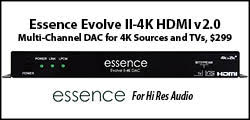

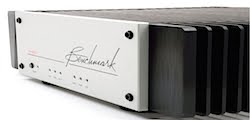



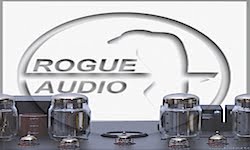

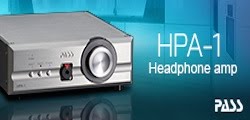


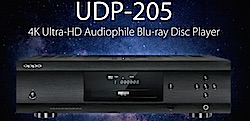


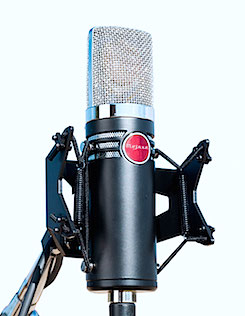

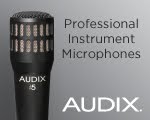









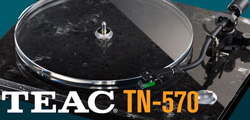





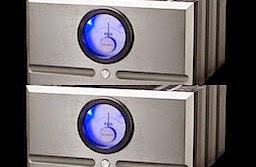






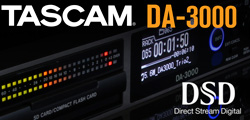

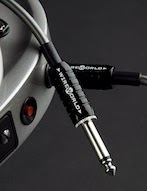

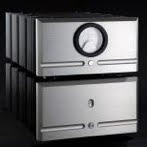









No comments:
Post a Comment